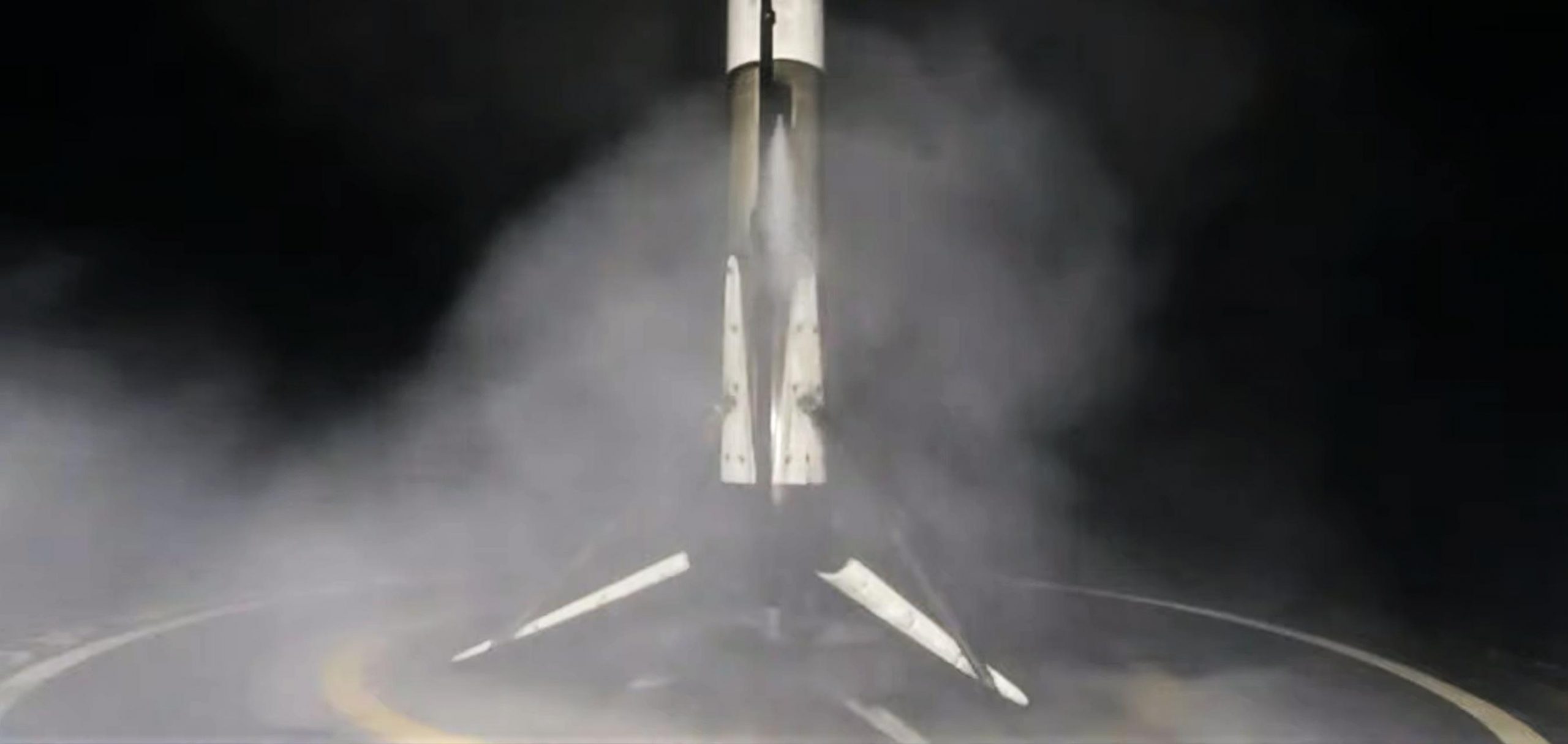
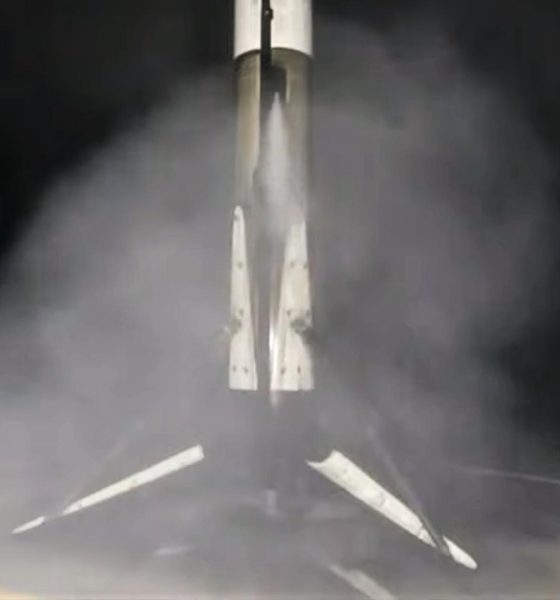
News
SpaceX sets Dragon reuse record, debuts drone ship on first launch in two months
Update #2: After a 24-hour weather delay, conditions were far more favorable on August 29th, allowing a SpaceX Falcon 9 rocket to lift off for the first time in almost two months and send a cargo-filled Dragon spacecraft on its way to the International Space Station (ISS).
Aside from marking the end of SpaceX’s longest launch hiatus in two years, CRS-23’s successful liftoff also means that the company has smashed the world record for fastest orbital space capsule reuse. As part of Cargo Dragon 2’s first reuse ever, SpaceX launched Dragon C208 just seven and a half months (227d) after its first orbital reentry and splashdown, handily beating the previous record of 328 days. Additionally, flying for the fourth time, Falcon 9 booster B1064 became the first rocket to land on brand new SpaceX drone ship A Shortfall of Gravitas (ASOG) after sending Dragon C208 on its way to the ISS.
Getting a nice view of CRS-23's trunk as it separates, confirming no trunk cargo on this flight. pic.twitter.com/ZeJjviKqFE— Jonathan McDowell (@planet4589) August 29, 2021
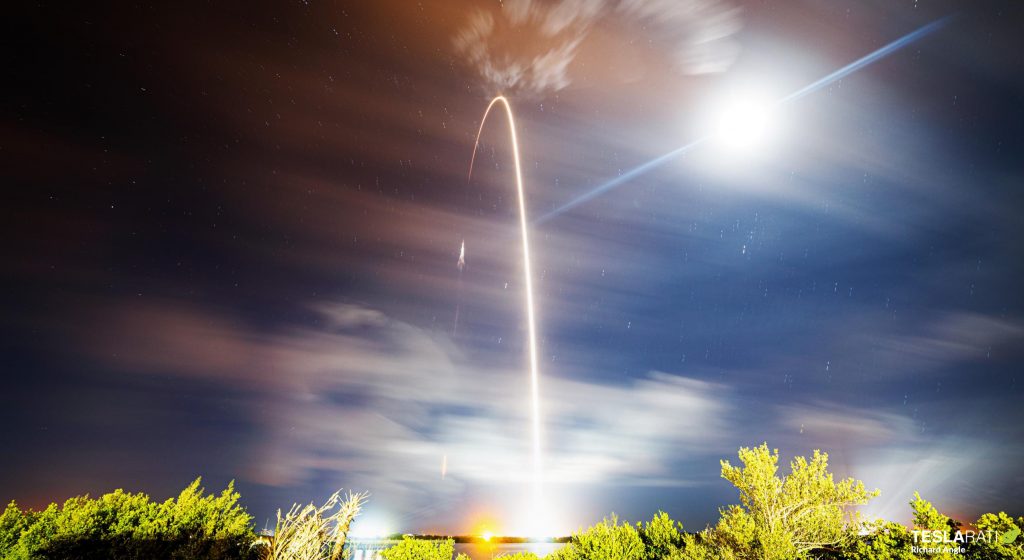
Update: Although the weather forecast has worsened, SpaceX remains on track to attempt its first launch in eight weeks – a mission that will also smash one of the company’s orbital spacecraft reusability records.
While mostly mundane, a system preceding Tropical Storm Ida is producing conditions less than optimal for rocket launches, raising the risk of in-flight lightning strikes and the chances of Falcon 9 and Dragon flying through clouds containing precipitation (rain/ice/etc). Ultimately, that means that there’s just a 40% chance (down from 50% in the last few days) that weather conditions will be favorable for SpaceX to launch CRS-23. Regardless, barring a surprise announcement in the next few hours, it appears that there’s enough of a chance that SpaceX and NASA will still make an attempt.
If all goes according to plan, a flight-proven Falcon 9 rocket will send an upgraded Cargo Dragon on the way to orbit for the second time in seven months – almost twice as fast a turnaround as SpaceX’s ~340-day record for orbital spacecraft reuse. Tune in below around 3:20am EDT (07:20 UTC) to catch the hopeful launch live.
For the first time in more than nine weeks, SpaceX has completed a routine Falcon 9 preflight test known as a static fire and verified that the rocket is ready to launch later this week.
Save for at least one booster qualification test completed at SpaceX’s McGregor, Texas development facilities, Falcon 9’s August 25th static fire is the first since June 22nd. The upgraded Cargo Dragon space station resupply mission the rocket will support will also be SpaceX’s first launch since June 30th – the company’s longest hiatus between launches since a three-month pause that began two years ago.
Now, just a few days before that drought is expected to end, a SpaceX executive has partially explained why the company hasn’t launched a single Falcon rocket in ~60 days after completing a record 20 orbital launches in the first half of 2021.
Speaking at the 2021 Space Symposium on August 24th, SpaceX President and COO Gwynne Shotwell revealed that the company had chosen to pause Starlink missions (representing the vast majority of its 2021 launches) and focus on preparing a new generation of satellites for flight. Believed to be called Starlink V1.5, those new satellites represent a relatively small design change save for one crucial addition: multiple lasers.
All the way back in mid-2018, SpaceX launched its very first pair of Starlink prototype satellites – spacecraft that largely functioned as expected and provided a wealth of data but were almost nothing like the Starlink V0.9 and V1.0 spacecraft SpaceX would eventually start launching in 2019. Nevertheless, they did carry sets of small lasers generally known as optical intersatellite links or OISLs for short. Not radically dissimilar to the hundreds of thousands of miles of fiber optic cables that make up the backbone of the internet, lasers operating in the vacuum of space can effectively mirror the extraordinary bandwidth and performance offered by fiber connections – but wirelessly.
Instead of carefully insulated cables filled with tiny threads of glass, which really just serve as a controlled environment for light-based communications, OISLs enable a similar feat by replacing cables with extraordinarily precise mechanisms capable of aiming lasers with sub-millimeter precision from dozens or hundreds of miles away. As a result, laser interlinks are fairly complex and expensive devices – not something currently economical to install on thousands of satellites mainly focused on affordability.
SpaceX, of course, has wanted to install unprecedentedly affordable laser interlinks on thousands of Starlink satellites for as long as the constellation has been publicly discussed. If realized, it would create an extraordinary orbital mesh network that would allow Starlink to self-route a large portion of user communications without the need for a colossal network of tens of thousands of ground stations covering every inch of Earth – land, sea, ice, and all. A Starlink constellation with near-universal laser interlinks could also potentially allow the constellation to not only match – but beat by a large margin – the latency of best-case terrestrial fiber-optic connections.
After effectively completing Starlink’s first ‘shell’ of satellites earlier this year, SpaceX shifted its focus to preparing for polar Starlink launches from both its west and east coast facilities. While the first shell lacked interlinks entirely, SpaceX appears to have decided that all polar Starlink satellites will be launched with its own custom-built space lasers, even if that means delaying Starlink launches until those lasers are ready for action. Due to the fact that the vast majority of SpaceX’s launches as of late have been its own Starlink missions, the company’s Falcon rockets simply haven’t had anything to launch.
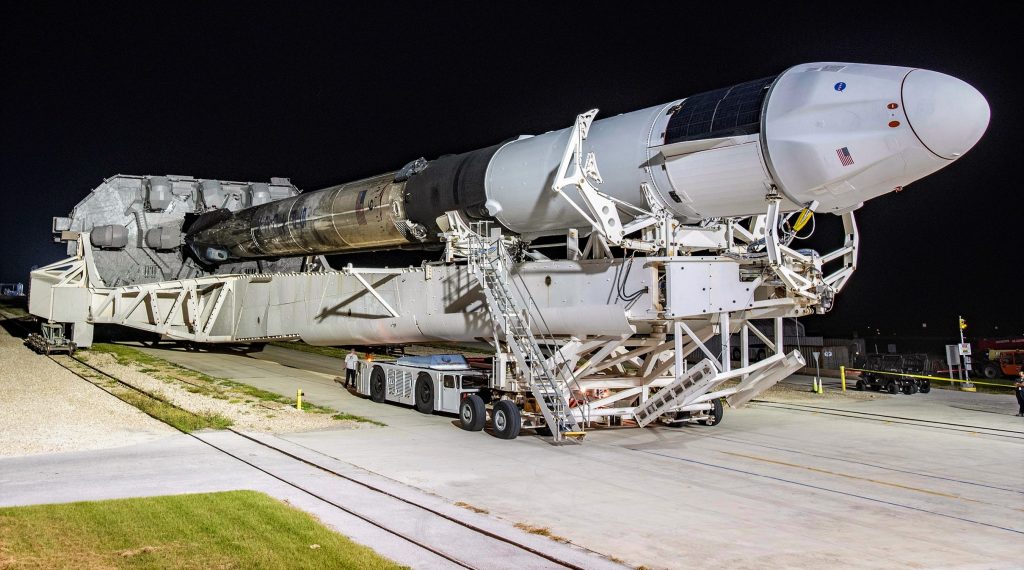
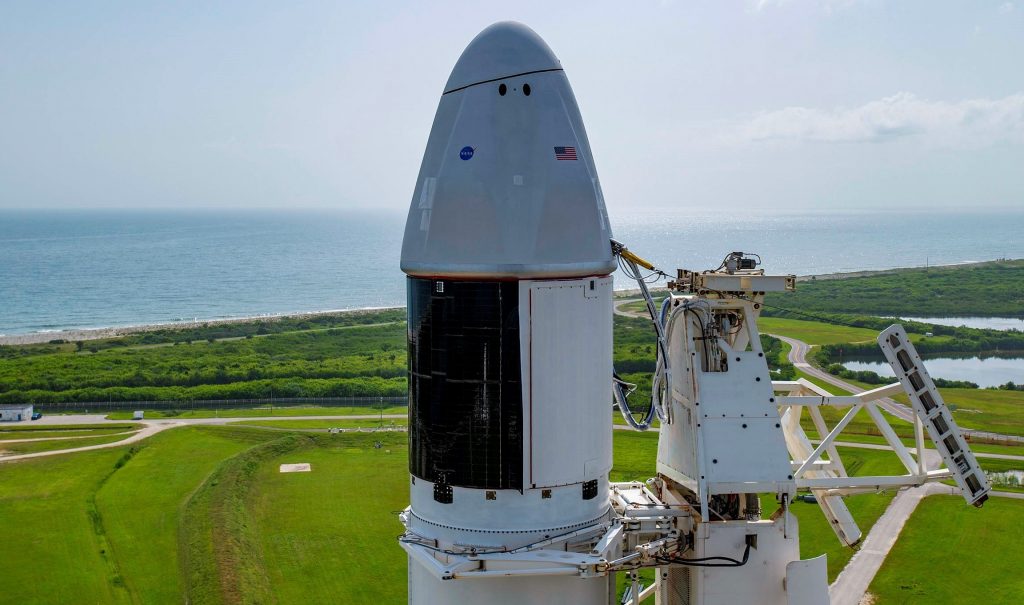
That should change on August 28th, when a thrice-flown Falcon 9 booster launches a refurbished spacecraft on its second orbital space station resupply – a first for SpaceX’s upgraded Cargo Dragon 2 vehicle. A Shortfall of Gravitas (ASOG), SpaceX’s newest drone ship, will also be supporting its first Falcon landing ever as part of CRS-23, hopefully recovering Falcon 9 booster B1064 for a fifth launch later this year.
Tune in around 3:20am (07:20 UTC) on Saturday, August 28th to watch SpaceX’s first launch in two months live.

Elon Musk
Tesla CEO Elon Musk teases insane capabilities of next major FSD update

Tesla CEO Elon Musk teased the insane capabilities of the next major Full Self-Driving update just hours after the company rolled out version 14.2 to owners.
Tesla Full Self-Driving v14.2 had some major improvements from the previous iteration of v14.1.x. We were on v14.1.7, the most advanced configuration of the v14.1 family, before Tesla transitioned us and others to v14.2.
However, Musk has said that the improvements coming in the next major update, which will be v14.3, will be where “the last big piece of the puzzle finally lands.”
14.3 is where the last big piece of the puzzle finally lands
— Elon Musk (@elonmusk) November 21, 2025
There were some major improvements with v14.2, most notably, Tesla seemed to narrow in on the triggers that caused issues with hesitation and brake stabbing in v14.1.x.
One of the most discussed issues with the past rollout was that of brake stabbing, where the vehicle would contemplate proceeding with a route as traffic was coming from other directions.
We experienced it most frequently at intersections, especially four-way stop signs.
Elon Musk hints at when Tesla can fix this FSD complaint with v14
In our review of it yesterday, it was evident that this issue had been resolved, at least to the extent that we had no issues with it in a 62-minute drive, which you can watch here.
Some owners also reported a more relaxed driver monitoring system, which is something Tesla said it was working on as it hopes to allow drivers to text during operation in the coming months. We did not test this, as laws in Pennsylvania prohibit the use of phones at any time due to the new Paul Miller’s Law, which took effect earlier this year.
However, the improvements indicate that Tesla is certainly headed toward a much more sentient FSD experience, so much so that Musk’s language seems to be more indicative of a more relaxed experience in terms of overall supervision from the driver, especially with v14.3.
Musk did not release or discuss a definitive timeline for the release of v14.3, especially as v14.2 just rolled out to Early Access Program (EAP) members yesterday. However, v14.1 rolled out to Tesla owners just a few weeks ago in late 2025. There is the potential that v14.3 could be part of the coming Holiday Update, or potentially in a release of its own before the New Year.
News
Tesla Full Self-Driving v14.2 – Full Review, the Good and the Bad

Tesla rolled out Full Self-Driving version 14.2 yesterday to members of the Early Access Program (EAP). Expectations were high, and Tesla surely delivered.
With the rollout of Tesla FSD v14.2, there were major benchmarks for improvement from the v14.1 suite, which spanned across seven improvements. Our final experience with v14.1 was with v14.1.7, and to be honest, things were good, but it felt like there were a handful of regressions from previous iterations.
While there were improvements in brake stabbing and hesitation, we did experience a few small interventions related to navigation and just overall performance. It was nothing major; there were no critical takeovers that required any major publicity, as they were more or less subjective things that I was not particularly comfortable with. Other drivers might have been more relaxed.
With v14.2 hitting our cars yesterday, there were a handful of things we truly noticed in terms of improvement, most notably the lack of brake stabbing and hesitation, a major complaint with v14.1.x.
However, in a 62-minute drive that was fully recorded, there were a lot of positives, and only one true complaint, which was something we haven’t had issues with in the past.
The Good
Lack of Brake Stabbing and Hesitation
Perhaps the most notable and publicized issue with v14.1.x was the presence of brake stabbing and hesitation. Arriving at intersections was particularly nerve-racking on the previous version simply because of this. At four-way stops, the car would not be assertive enough to take its turn, especially when other vehicles at the same intersection would inch forward or start to move.
This was a major problem.
However, there were no instances of this yesterday on our lengthy drive. It was much more assertive when arriving at these types of scenarios, but was also more patient when FSD knew it was not the car’s turn to proceed.
Can report on v14.2 today there were ZERO instances of break stabbing or hesitation at intersections today
It was a significant improvement from v14.1.x
— TESLARATI (@Teslarati) November 21, 2025
This improvement was the most noticeable throughout the drive, along with fixes in overall smoothness.
Speed Profiles Seem to Be More Reasonable
There were a handful of FSD v14 users who felt as if the loss of a Max Speed setting was a negative. However, these complaints will, in our opinion, begin to subside, especially as things have seemed to be refined quite nicely with v14.2.
Freeway driving is where this is especially noticeable. If it’s traveling too slow, just switch to a faster profile. If it’s too fast, switch to a slower profile. However, the speeds seem to be much more defined with each Speed Profile, which is something that I really find to be a huge advantage. Previously, you could tell the difference in speeds, but not in driving styles. At times, Standard felt a lot like Hurry. Now, you can clearly tell the difference between the two.
It seems as if Tesla made a goal that drivers should be able to tell which Speed Profile is active if it was not shown on the screen. With v14.1.x, this was not necessarily something that could be done. With v14.2, if someone tested me on which Speed Profile was being used, I’m fairly certain I could pick each one.
Better Overall Operation
I felt, at times, especially with v14.1.7, there were some jerky movements. Nothing that was super alarming, but there were times when things just felt a little more finicky than others.
v14.2 feels much smoother overall, with really great decision-making, lane changes that feel second nature, and a great speed of travel. It was a very comfortable ride.
The Bad
Parking
It feels as if there was a slight regression in parking quality, as both times v14.2 pulled into parking spots, I would have felt compelled to adjust manually if I were staying at my destinations. For the sake of testing, at my first destination, I arrived, allowed the car to park, and then left. At the tail-end of testing, I walked inside the store that FSD v14.2 drove me to, so I had to adjust the parking manually.
This was pretty disappointing. Apart from parking at Superchargers, which is always flawless, parking performance is something that needs some attention. The release notes for v14.2. state that parking spot selection and parking quality will improve with future versions.
Any issues with parking on your end? 14.1.7 didn’t have this trouble with parking pic.twitter.com/JPLRO2obUj
— TESLARATI (@Teslarati) November 21, 2025
However, this was truly my only complaint about v14.2.
You can check out our full 62-minute ride-along below:
Elon Musk
SpaceX issues statement on Starship V3 Booster 18 anomaly
The incident unfolded during gas-system pressure testing at the company’s Massey facility in Starbase, Texas.

SpaceX has issued an initial statement about Starship Booster 18’s anomaly early Friday. The incident unfolded during gas-system pressure testing at the company’s Massey facility in Starbase, Texas.
SpaceX’s initial comment
As per SpaceX in a post on its official account on social media platform X, Booster 18 was undergoing gas system pressure tests when the anomaly happened. Despite the nature of the incident, the company emphasized that no propellant was loaded, no engines were installed, and personnel were kept at a safe distance from the booster, resulting in zero injuries.
“Booster 18 suffered an anomaly during gas system pressure testing that we were conducting in advance of structural proof testing. No propellant was on the vehicle, and engines were not yet installed. The teams need time to investigate before we are confident of the cause. No one was injured as we maintain a safe distance for personnel during this type of testing. The site remains clear and we are working plans to safely reenter the site,” SpaceX wrote in its post on X.
Incident and aftermath
Livestream footage from LabPadre showed Booster 18’s lower half crumpling around the liquid oxygen tank area at approximately 4:04 a.m. CT. Subsequent images posted by on-site observers revealed extensive deformation across the booster’s lower structure. Needless to say, spaceflight observers have noted that Booster 18 would likely be a complete loss due to its anomaly.
Booster 18 had rolled out only a day earlier and was one of the first vehicles in the Starship V3 program. The V3 series incorporates structural reinforcements and reliability upgrades intended to prepare Starship for rapid-reuse testing and eventual tower-catch operations. Elon Musk has been optimistic about Starship V3, previously noting on X that the spacecraft might be able to complete initial missions to Mars.








